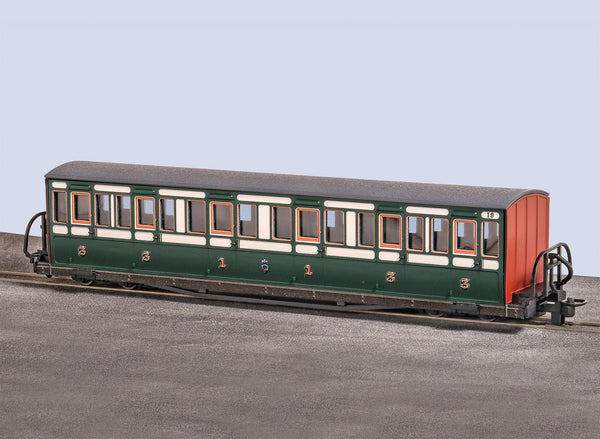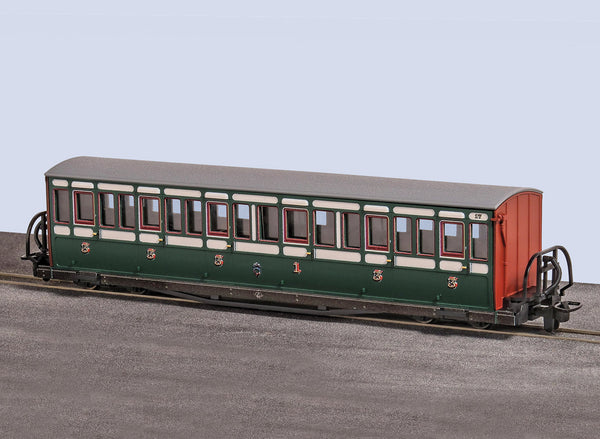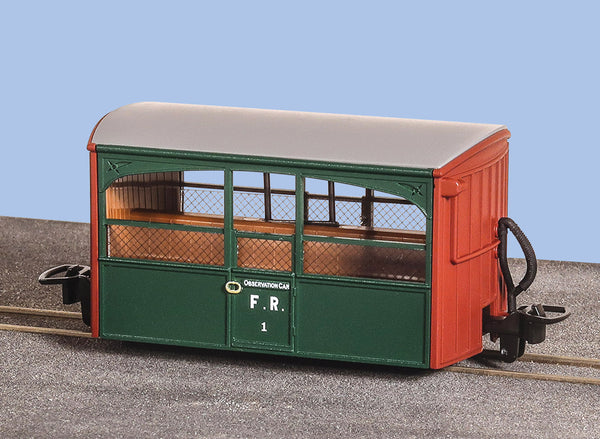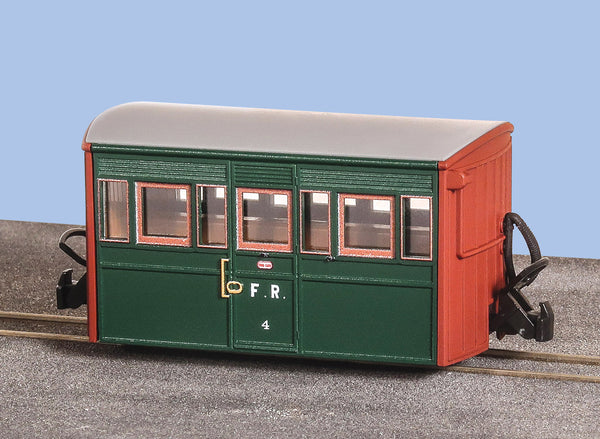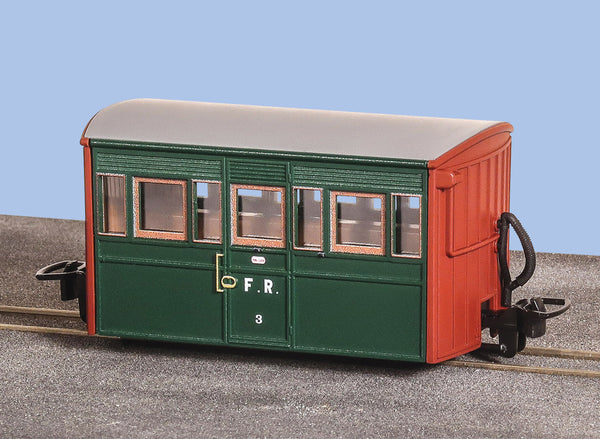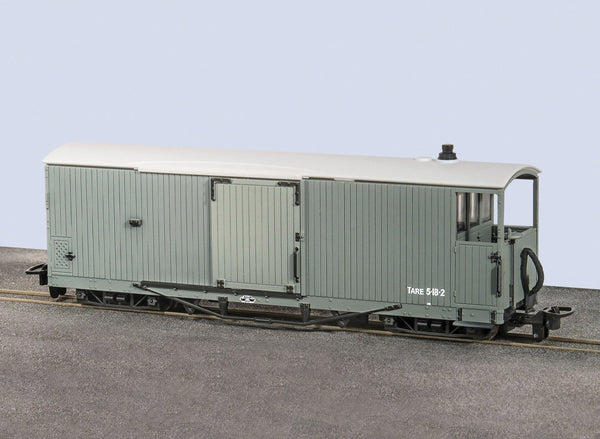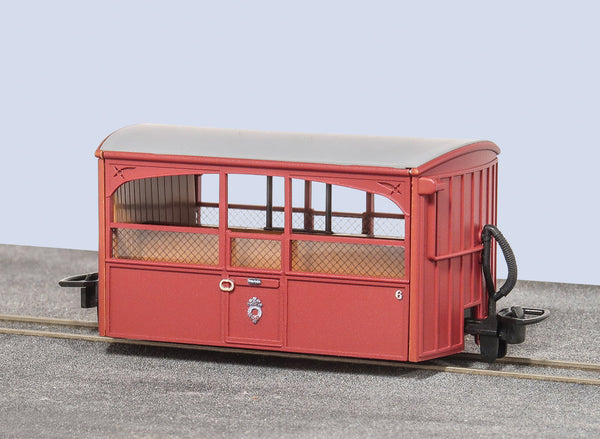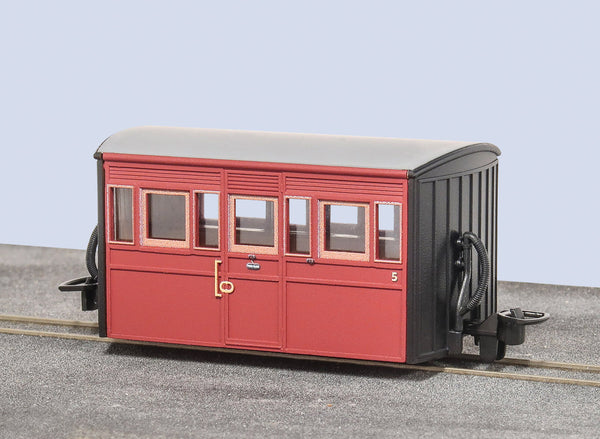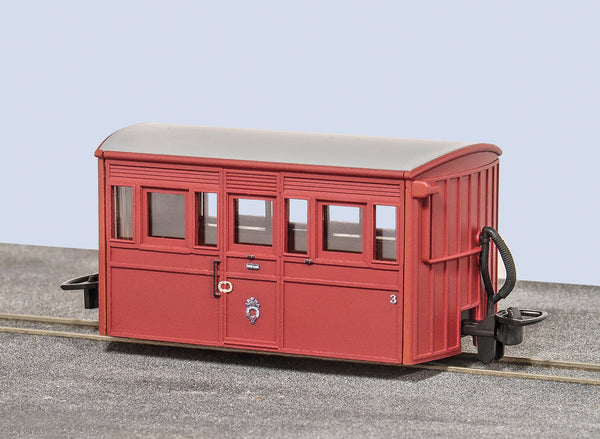BROWSE PECO PRODUCTS
Browse through our complete product portfolio.
152 Products Found
OO-9 Small England PECO/KATO Locomotive - 'Palmerston' (Maroon)
Available now!
Narrow gauge ready-to-run locomotives in 1:76 scale, 9mm gauge track. DC (analogue) core-less motor fitted within loco body giving smooth and reliable running. Loco and tender electrically connected – pick ups on front loco axles and two tender axles. Inner axle of loco fitted with traction tyres. Will comfortably negotiate 9inch/229mm radius curves. Fully decorated with fine lining and small details. Separate moulding supplied for handrails, and other details. Supplied fitted with standard PECO OO-9 coupling, Arnold N gauge couplings supplied separately.
Please note: DCC operation is possible with this model but it is not currently supplied as 'DCC-Ready' and will need to be carefully retro-fitted.
FR Short 'Bowsider' Bogie Coach - Early Preservation - Green 20
FR Short 'Bowsider' Bogie Coach - Early Preservation - Green 18
FR Short 'Bowsider' Bogie Coach - Early Preservation - Green 19
FR Short 'Bowsider' Bogie Coach - Early Preservation - Green 17
OO-9 Bug Box coach Col. Stephens Livery, Zoo car
The next batch of our Ffestiniog Railway 4-wheel "Bug Box" coaches are now in stock. These popular models continue to sell well and this next batch will be equally as sought-after as the others. We have paid a lot of attention to the livery characteristics of these coaches, ensuring that all details are as accurate as they can be, with some very fine printing detail and authentic colours. Free-running metal-tyred wheels are now fitted as standard to all of our new OO-9 releases.
OO-9 Bug Box Coach - Colonel Stephens Livery - No.4
OO-9 Bug Box Coach - Colonel Stephens Livery - No.3
L&B 8-ton Bogie Goods Brake Van OO-9
The next new livery for the L&B Goods Brake Van is this plain grey unlettered models, aimed at the freelance modeller.
Removing all references to the Lynton and Barnstaple Railway but leaving behind the useful detail such as tare weight and builder plate will please those OO-9 modellers who want to create their own unique and individual railway in miniature.
OO-9 Bug Box Coach 1970s/80s Livery, Zoo Car
Our NEW Ffestiniog Railway "Bug Box" coaches, wearing the plain red livery from the preservation era of the 1970s & 1980s. Plain they may be, but when you look closely, you will notice that actually there is plenty of very fine detail, including the FR emblem, door handles and running numbers.
OO-9 Bug Box Coach 1970s/80s Livery, No. 5
Our NEW Ffestiniog Railway "Bug Box" coaches, wearing the plain red livery from the preservation era of the 1970s & 1980s. Plain they may be, but when you look closely, you will notice that actually there is plenty of very fine detail, including the FR emblem, door handles and running numbers.
OO-9 Bug Box Coach 1970s/80s Livery, No. 4
Our NEW Ffestiniog Railway "Bug Box" coaches, wearing the plain red livery from the preservation era of the 1970s & 1980s. Plain they may be, but when you look closely, you will notice that actually there is plenty of very fine detail, including the FR emblem, door handles and running numbers.













